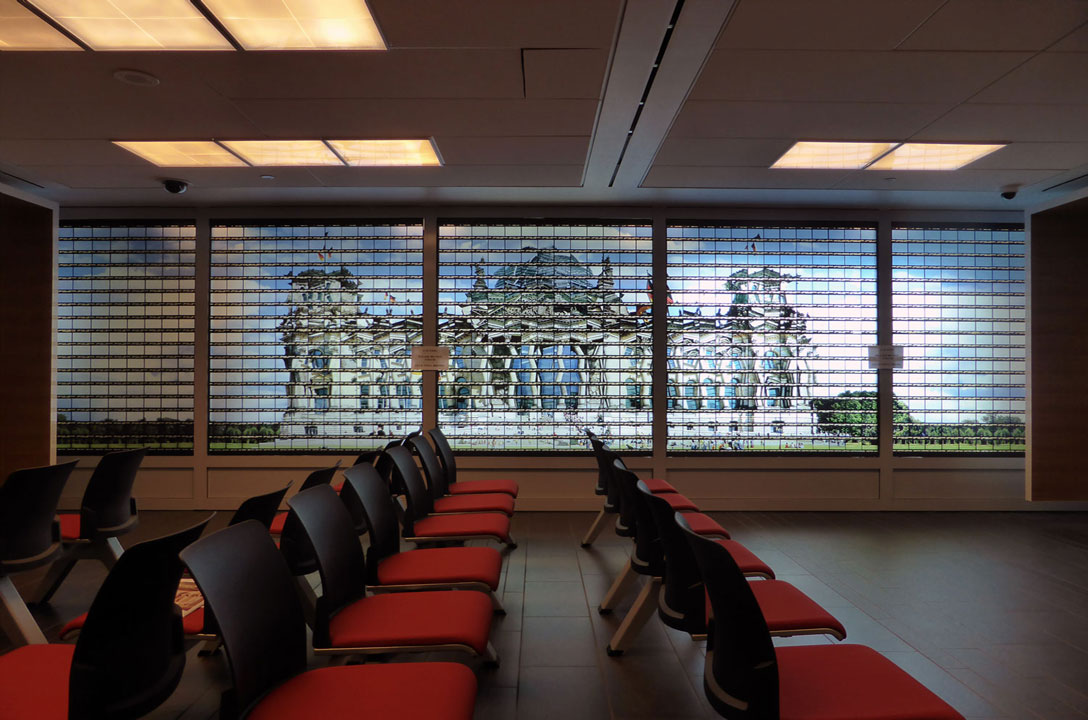Reichstag, Berlin
The Reichstag, the seat of the German Parliament, is close to the Brandenburger Tor and before the unification; it was right next to the wall. It was designed in 1872 by Paul Wallot in neo-renaissance architectural styles and measures 137 metres long and 97 metres wide. Construction started in 1884 and was finished in 1894, mainly funded with wartime reparation money from France. The inscription 'Dem Deutschen Volke' was only added in 1916. Because of damage in war it was reconstructed in 1995 until 1999. The glass dome, designed by Sir Norman Foster was added over the plenary hall.
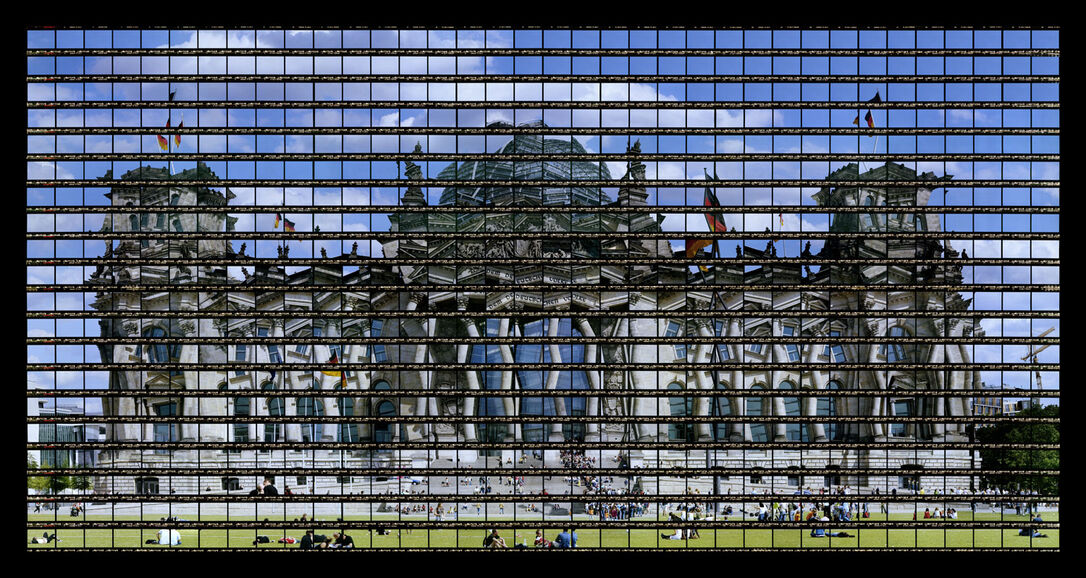
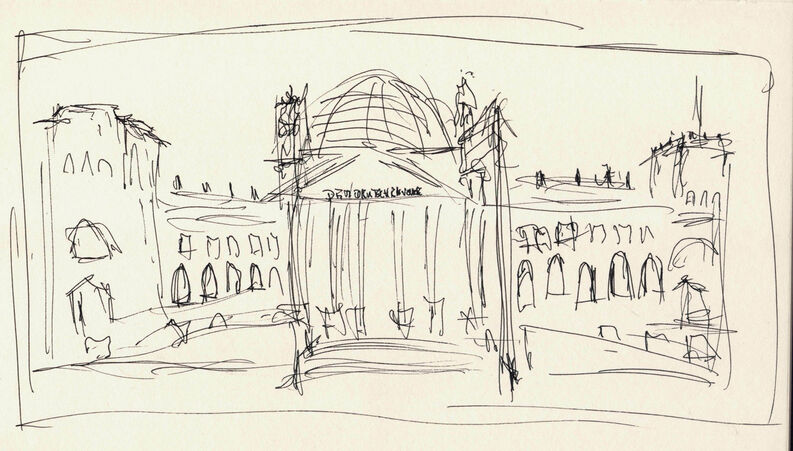
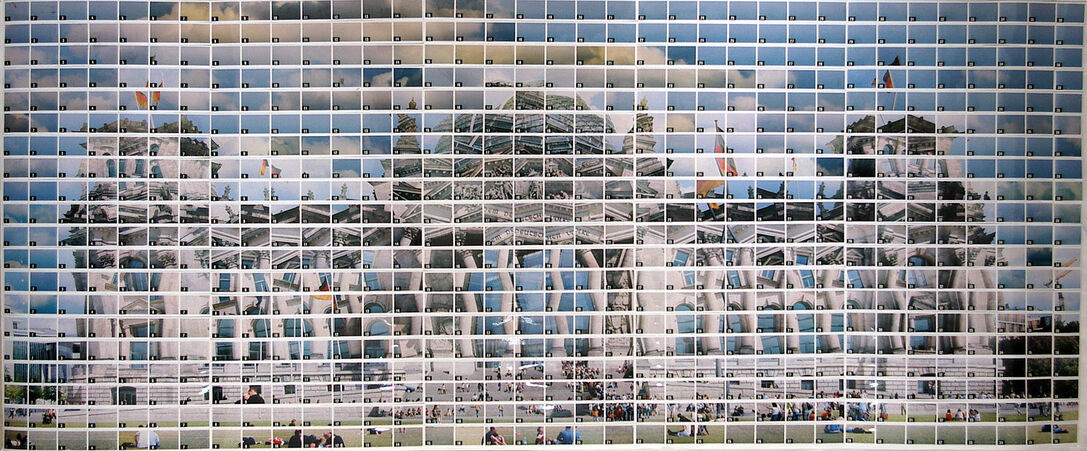
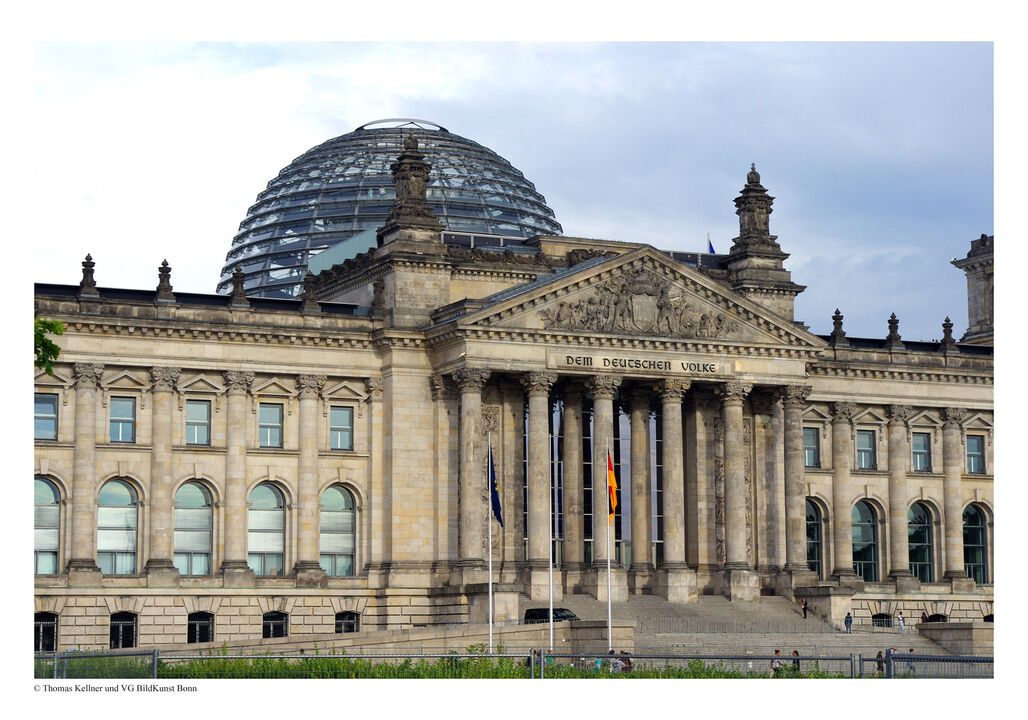
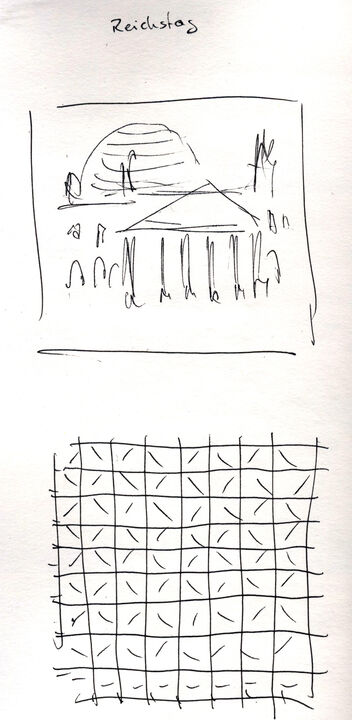
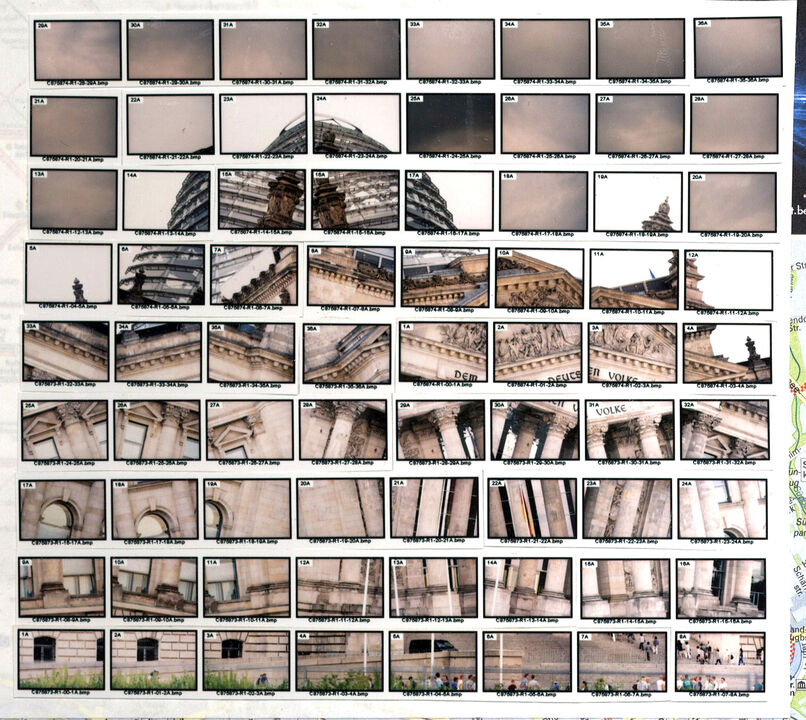
The Art of Thomas Kellner
“It is no coincidence that Kellner’s works should look like assembled puzzles, because they engage the thoughtful viewer into unravelling – both visually and intellectually – the meaning of these architectural structures.”
Fernando Castro R., Houston/Texas
Thomas Kellner’s artistic work begins long before the click of the shutter. Even before taking the first photo, he puzzles it out in detail both inwardly and on paper, sketching, fantasizing, deconstructing and constructing. It's a truly creative craft and the artist needs a very visual imagination. On top of that, it demands an enormous amount of precision to be able to assemble all the pictures mentally beforehand and to incorporate movements into a coherent final product. Once he has planned out meticulously in his sketchbook how to shoot the photographic theme, the second phase of the creative process begins. He sets up the tripod, screws on the SLR camera, and positions it carefully. Then, normally beginning bottom left, Thomas Kellner photographs his subject from left to right, frame by frame. The abbreviation “\ - /”, recorded in advance, indicates the camera position. The rolls of film, each with 36 photos, are then arranged next to each other by hand and coordinated into one unified work. Only then is it possible to see the final product that Kellner had aesthetically conceptualized in his complex preparations. And it works, as can be seen in his picture of the Berlin Reichstag. The Berlin Reichstag in Kellner's piece comes across as very moving, just as the Reichstag's history itself. In his work for the Consulate General in Toronto, Kellner not only disassembles the Bundestag in his cinemascopic deconstructions, but also places it in a new landscape full of green trees. This incorporates the creative power inherent in a romantic image of Germany, such as in the paintings of Caspar David Friedrich. The romance of the stereotypical images present in Kellner's postmodern cubist deconstructive reconstructions puts the viewer in the mood to observe.
The Artist
This Bonn native has lived in Siegen since 1989, where he successfully completed his degree and has been working as a freelance artist since 1997. His works and project have had an impact worldwide, far from his atelier in Friedrichstraße. Many of the artist's pieces have been shown in solo exhibitions in London, Paris, Brasilia, New York, and more. Kellner's works are also part of museum collections in locations like Houston, Chicago, Rochester, and Rio de Janeiro. His most important projects in recent years include pieces for the 200th anniversary of the Boston Athenaeum; the 50th birthday of Brasilia, the capital of Brazil; and the wonderful project “Genius loci – Two Siegeners in the Land of the Tsars”. This last endeavour connects the history of industry photography and Thomas Kellner's works together with the history of Georg Wilhelm Henning, one of the founders of the Russian cities of Yekaterinburg and Perm, and his influence on the industrial culture of the Urals.
